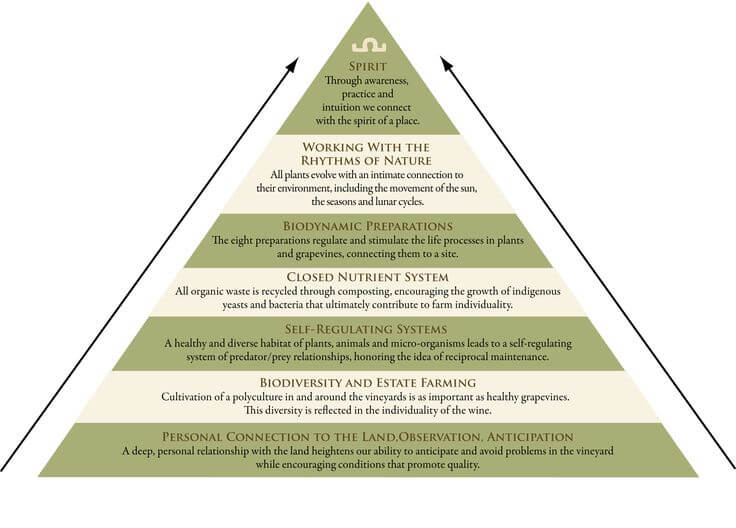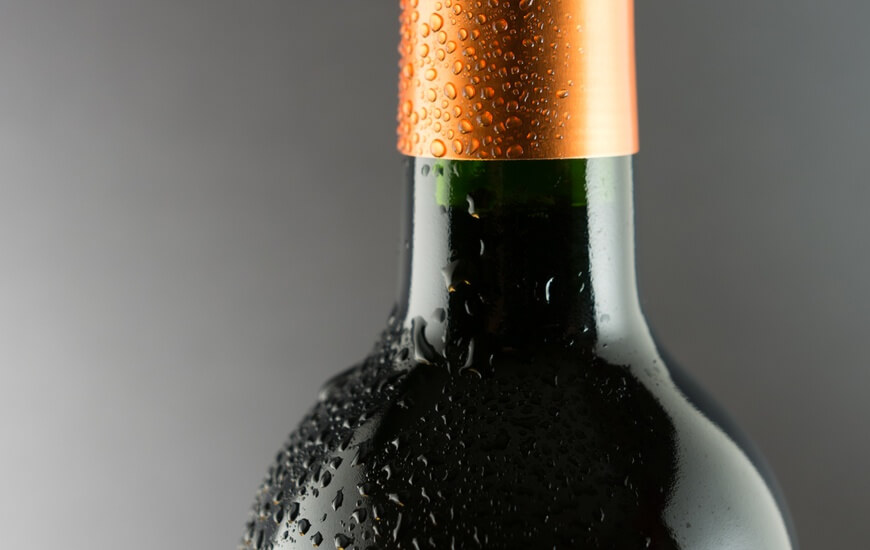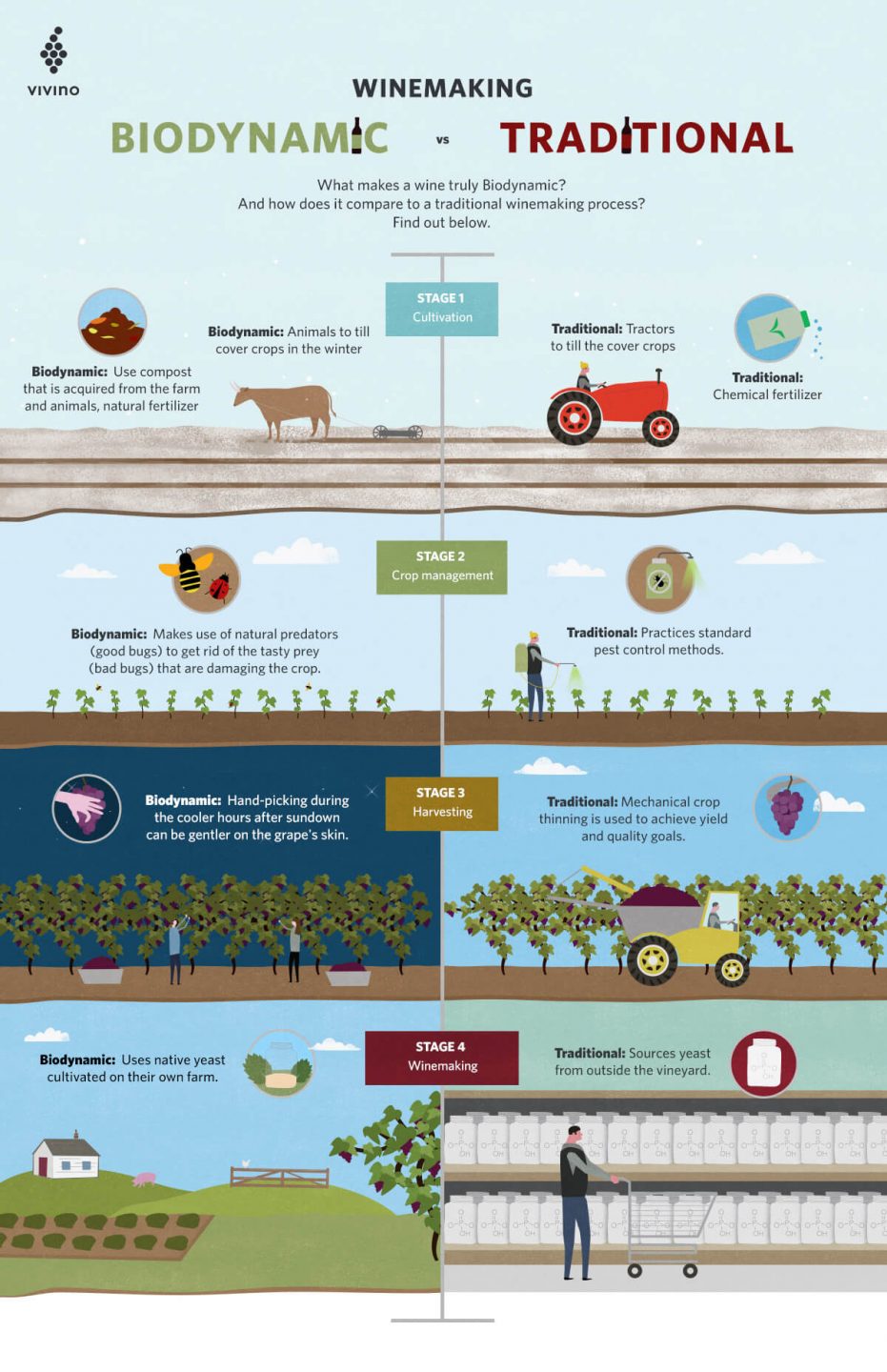New Trend, Old Method
Biodynamic Farming is no new science or view on farming. In all reality, it dates back to the 1920’s and a man named Rudolf Steiner. Steiner was, in a way, a renaissance man. Born in Australia, he was a philosopher, author, social reformer, architect and esotericist. His first phase of work was known for attempting to establish a commonality and link between science and spirituality, and termed it “spiritual science”. His second phase was a mix of art and architecture. In his third phase of work he moved towards more hands on endeavors, including Waldorf education, anthroposophical medicine, and biodynamic agriculture.
His approach towards farming was a response to a group of farmers who were concerned about the future of farming. In his lecture series he provided an ecological and sustainable method that denied the use of chemical fertilizers and pesticides, and in turn increased soil fertility.

The idea central to biodynamic farming is the view of the farm as a whole organism, and the thought that it should be a self-sustaining system; this includes producing its own manure and animal feed. When a disease arises, whether within the plant or animal community in the farm, it is viewed as a problem with the whole “organism”, or the farm as a whole. Other ideas presented within Steiner’s approach are suggested timing of sowing, weeding, and harvesting based on the moon and the plants; this is one of the main reasons way biodynamic farming is referred to as a pseudoscience by some.
Biodynamic farming is now used across a multiplicity of continents and on all types of farms, vineyards, agricultural systems. The idea of having a diversified and balanced farm ecosystem is one that generates as much health and fertility on the farm from within the farm as it possibly can.
In the news:
Pope celebrates birthday with ‘Biodynamic Cake’
The Latest Farming Trend that’s better than organic
The Importance of Organic Farming
Biodynamic farming is organic integrated farming with attention towards the skies. Whether you are thinking about biodynamic farming, integrated farming, or organic farming – or maybe traditional farming, it’s important to understand why the use of chemicals in farming is detrimental to all life forms on the planet, and to understand how we are all interrelated.
Less than a month ago an article appeared in the Huffington Post labeled, Toxic Farms, Climate Change, written by Evaggelos Vallianatos. In the article he talks about the effects of chemicals in farming on humans, such as the link to a multiplicity of cancers, as well as the seemingly inevitable extinction of honeybees, which, you may not have known make possible 1/3rd of the food we eat.

Organic farming factoid
Animal farms are another form of “farming” that are poisoning animals, the land, the rivers, and the water. Cramming loads of animals into a small space, then adding in the chemicals utilized, and the massive amounts of feces and urine, you get an unnatural environment that is doing extensive amounts of harm, beyond the inhumane treatment of animals. In 2006 the UN Food and Agriculture Organization estimated that approximately 18% of CO2 came from animal farms, 37 % of methane emissions, and 65% of nitrous oxide as well as 64% of ammonia which is responsible for acid rain. All of this amounts to the fact that animal farms are endangering the planet in an enormous way that is potentially irreversible.
What do we do?
It turns out that manure, compost, and cover crops help build a fungi that is capable of keeping carbon in the ground for a long, long time. One pound of carbon = 40 pounds of water, so in essence the more carbon the soil contains, the more water the soil retains, and the more fertile the soil is.
Small farms need to reintegrate the use of animals into their agriculture to create a more ecofriendly farm. The use of manure is extremely beneficial in creating healthy soil and sequestering carbon dioxide. Small farms are the answer to solving the problems of toxic farms.
In the news:
Farmers must be at the forefront of Climate Change
USDA report details climate change threat to U.S. and Global Agriculture
USDA.gov: Climate Change Global Food Security and the U.S. Food System
Biodynamic Wine
Then we come to biodynamic wine, which refers not only to the principles of biodynamic being applied to the agricultural process as well as the handling and processing of the fruit after it has been harvested. If you are interested in vineyards for sale, wineries for sale, or land for sale suitable for vineyards, it is due time for you to delve into the world of farming and the methods out there. This will be the basis of the operation and part of your business statement, the lasting effect you wish to have on the land and the consumers.
At the heart of the biodynamic vineyard is the biodynamic calendar, in which every day is classified as one of the following:
- Fruit Day: Best for harvesting grapes
- Root Day: Ideal for pruning
- Flower Day: Leave the vineyard alone
- Leaf Day: Ideal for watering
There are also a variety of composting methods specific to biodynamic farming. Warning: These are definitely a bit weird, but those committed to the practice of biodynamic farming as a whole swear by it. There are six compost preparations and they are made from specific herbs.
- Yarrow flowers
- Chamomile blossoms
- Areal portion of the stinging nettle while in the flower
- Oak bark
- Dandelion blossom
- Valerian flowers
Four of these are packaged inside sheaths of animal organs, however all of them are created with sensitivity towards the zodiac and rhythms of the sun. All but one are in the ground for an allotted amount of time. You can learn more about this practice at Biodynamic Association and at Wine Turtle. The weirdest of all the composting methods has something to do with a cow horn that is stuffed, buried, dug up, and then used across the vineyard. Cow horns for hundreds of years have represented prosperity and fertility, so there is that.
There is a list compiled of biodynamic wine producers.
Biodynamic Wine: A New Trend in Organic Vineyards
Organic Wine and the American Wine Consumer
What are growers saying about their biodynamic vineyards? Well for starters, their vines are less stressed, respond to disease better, and can utilize minerals better. The soil is healthier, and contains all it requires most everything the vines need, thus the vines are void of deficiencies. Preservation and encouragement of the ecosystem as a whole are center to this practice, which means the flora and fauna are also thriving. In the end, it is said this leads to a harmonious environment which produces tasty fruit and high quality wine.
So certainly from all of this we can conclude that in terms of the future of farming, the integrated farming and organic techniques used in biodynamic farming are certainly necessary in reducing emissions and creating a healthy sustainable farm, healthy animals and delicious produce. Seems like a winning scenario.
When looking at your vineyard, future vineyard or vineyards for sale it is very important to think about what farming techniques are being used or will be used. This will determine the quality of your grape and your vineyard’s effect on the environment. This should be important to you as an owner, as well as to the consumer.
It is not easy being green, to say the least. Although the trend for American’s spending more on organic food is definitely there, organic wine is a different story. This is in the process of changing, but needless to say many organic and biodynamic wines are not going out of their way to label them as such. Even so, many grape growers want to go green. It is more about it being the best way to do business in the long run. Your personal beliefs will, in the end, guide your business practice and your farming practice.

